- Home
- Franz Kafka
The Castle: A New Translation Based on the Restored Text Page 34
The Castle: A New Translation Based on the Restored Text Read online
Page 34
When Kafka died in 1924, Brod rapidly began to make his unpublished works known. He brought out the The Trial in 1925, The Castle in 1926, and Amerika in 1927. Of his first edition of The Castle Brod later declares: “At that time my aim was to present in accessible form an unconventional, disturbing work which had not been quite finished: thus every effort was made to avoid anything that might have emphasized its fragmentary state.” In order to achieve this he brought the novel to a close at a point which suggested to him that the hero had suffered a “probably decisive” defeat, namely when K. loses Frieda (end of chapter 22 in the critical edition). Almost a fifth of Kafka’s text was thus omitted.
Brod’s second edition, which restored most of what he had left out, went virtually unnoticed for political reasons. It was published in 1935 in Berlin, by Schocken Verlag, which was only permitted to issue its books in limited editions (and with sales restricted to Jewish readers); that same year Kafka’s work as a whole was entered in the notorious “List of Harmful and Undesirable Literature.” So it was not in the original German that this novel by a writer rejected in the Third Reich became world famous, but through translations—above all the English translation by Willa and Edwin Muir (1930). But all these translations were based on the text of Brod’s severely abridged first edition. The fuller text which he presented in 1935 did not become widely known until much later, when it was republished in 1946 (by Schocken Books, New York) and in 1951 (by S. Fischer, Frankfurt am Main).
After Brod had completed his own editorial work and most of Kafka’s manuscripts had become available for study (in 1961), it was possible to undertake the critical edition of his writings, diaries, and letters. The first volume to appear was The Castle (with the accompanying critical apparatus in a separate volume) in 1982.
In this edition the chaptering of the novel differs markedly from Brod’s. A list of numbered chapter headings in Kafka’s hand, together with marks in the manuscript indicating chapter divisions, makes clear what the author intended. (Since Kafka wrote on principle without advance planning—“open-endedly,” as he put it—the chaptering of a story could only be determined retrospectively, as the story developed: thus at the time he abandoned the novel the question of dividing up the last part of the text he wrote had not yet arisen.)
Kafka never prepared his “Castle story” for publication. He merely brought it to the stage at which he could read aloud from it if occasion arose. This informal character of his text is of course preserved in the critical edition, for the sake of authenticity, but Brod was governed by other considerations: when he produced his fuller version of the novel in 1935 the prime need was still to make the existence of Kafka’s unpublished works more generally known. He and his co-editor, Heinz Politzer, wished to make the text of the novel as easy of access as possible; they therefore emended, among other things, such local “Prague and Austrian forms” as might “impede the diffusion of Kafka’s writings.”1 If Kafka had prepared the work for press, he might indeed have taken some steps in this direction himself. However, the attempts to correct Kafka’s supposed mistakes sometimes proved thoroughly misleading. For example, in the first paragraph of the novel Kafka wrote: “For a long time K. stood on the wooden bridge which leads from the main road to the village …” This is “corrected” to read: “… which led from the main road to the village …” But the present tense is by no means an error on Kafka’s part: on the contrary, it signals the presence of a narrator who is not wholly shackled to his hero’s awareness, but who can oversee more and vouch for more than he can.
Finally, a word needs to be said about Kafka’s light and sometimes unconventional punctuation. When a continuous sequence of the hero’s experiences and thoughts is narrated, this is done in a single sentence, divided by commas only, so as not to interrupt the flow:
Actually, they had only moved out the maids, aside from that the room was probably unchanged, there were no sheets on the one bed, just a few pillows and a horse blanket left in the same state as everything else after last night, on the wall there were a few saints’ pictures and photographs of soldiers, the room hadn’t even been aired, they were evidently hoping the new guest wouldn’t stay long and did nothing to keep him.
In the Brod/Politzer edition one clause is detached from this chain to form a separate sentence, so that the impulse of the passage is lost.
Kafka’s unorthodox punctuation serves not so much to clarify the grammatical structure of his sentences as to convey the rhythm of the events and thoughts recounted. It is related to the predominantly oral quality of his narrative style. He is known to have judged his own stories above all by the effect which they had when read aloud. “Readers would do well,” remarks one critic, “to try and restore to his language the sound pattern which he gave it, and not to remain content with the poor substitute of silent reading.”2
* This afterword is a translation of that which was written for the paperback edition of the novel in the German critical edition (Franz Kafka, Das Schloß, Roman in der Fassung der Handschrift [Frankfurt am Main: Fischer Taschenbuch Verlag, 1994], 385–90).
Notes
1. Heinz Politzer, “Zur Kafka-Philologie,” Die Sammlung 2 (1935): 386f.
2. Richard Thieberger, “Sprache,” in Kafka-Handbuch, ed. Hartmut Binder (Stuttgart, 1979), 2: 198.
THE LIFE OF FRANZ KAFKA
1883 July 3: Franz Kafka is born in Prague, son of Hermann Kafka and Julie, née Löwy.
1889 Enters a German primary school. Birth of his sister Elli Kafka, his first surviving sibling.
1892 Birth of his sister Ottla Kafka.
1893 Enters Old City German Secondary School in Prague.
1896 June 13: Bar mitzvah—described in family invitation as “Confirmation.”
1897 Anti-Semitic riots in Prague; Hermann Kafka’s dry goods store is spared.
1899–1903 Early writings (destroyed).
1901 Graduates from secondary school. Enters German University in Prague. Studies chemistry for two weeks, then law.
1902 Spring: Attends lectures on German literature and the humanities. Travels to Munich, planning to continue German studies there. Returns to Prague. October: First meeting with Max Brod.
1904 Begins writing “Description of a Struggle.”
1905 Vacation in Zuckmantel, Silesia. First love affair.
1906 Clerk in uncle’s law office. June: Doctor of Law degree.
1906–1907 Legal practice in the Landesgericht (provincial high court) and Strafgericht (criminal court).
1907–1908 Temporary position in the Prague branch of the private insurance company Assicurazioni Generali.
1908 March: Kafka’s first publication—eight prose pieces appear in the review Hyperion. July 30: Enters the semi-state-owned Workers Accident Insurance Company for the Kingdom of Bohemia in Prague; works initially in the statistical and claims departments. Spends time in coffeehouses and cabarets.
1909 Begins keeping diaries. April: Kafka’s department head lauds his “exceptional faculty for conceptualization.” September: Travels with Max and Otto Brod to northern Italy, where they see airplanes for the first time. Writes article “The Aeroplanes in Brescia,” which subsequently appears in the daily paper Bohemia. Frequent trips to inspect factory conditions in the provinces.
1910 May: Promoted to Concipist (junior legal advisor); sees Yiddish acting troupe. October: Vacation in Paris with Brod brothers.
1911 Trip with Max Brod to northern Italy and Paris; spends a week in a Swiss natural-health sanatorium. Becomes a silent partner in the asbestos factory owned by his brother-in-law. October 4: Sees Yiddish play Der Meshumed (The Apostate) at Café Savoy. Friendship with the Yiddish actor Yitzhak Löwy. Pursues interest in Judaism.
1912 February 18: Gives “little introductory lecture” on Yiddish language. August: Assembles his first book, Meditation; meets Felice Bauer. Writes the stories “The Judgment” and “The Transformation” (frequently entitled “The Metamorphosis” in Eng
lish), begins the novel The Man Who Disappeared (first published in 1927 as Amerika, the title chosen by Brod). October: Distressed over having to take charge of the family’s asbestos factory, considers suicide. December: Gives first public reading (“The Judgment”).
1913 Extensive correspondence with Felice Bauer, whom he visits three times in Berlin. Promoted to vice-secretary. Takes up gardening. In Vienna attends international conference on accident prevention and observes Eleventh Zionist Congress; travels by way of Trieste, Venice, and Verona to Riva.
1914 June: Official engagement to Felice Bauer. July: Engagement is broken. Travels through Lübeck to the Danish resort of Marielyst. Diary entry, August 2: “Germany has declared war on Russia—swimming club in the afternoon.” Works on The Trial; writes “In the Penal Colony.”
1915 January: First meeting with Felice Bauer after breaking engagement. March: At the age of thirty-one moves for the first time into own quarters. November: “The Transformation” (“The Metamorphosis”) appears; Kafka asks a friend: “What do you say about the terrible things that are happening in our house?”
1916 July: Ten days with Felice Bauer at Marienbad. November: In a small house on Alchemists’ Lane in the Castle district of Prague begins to write the stories later collected in A Country Doctor.
1917 Second engagement to Felice Bauer. September: Diagnosis of tuberculosis. Moves back into parents’ apartment. Goes to stay with his favorite sister, Ottla, on a farm in the northern Bohemian town of Zürau. December: Second engagement to Felice Bauer is broken.
1918 In Zürau writes numerous aphorisms about “the last things.” Reads Kierkegaard. May: Resumes work at insurance institute.
1919 Summer: To the chagrin of his father announces engagement to Julie Wohryzek, daughter of a synagogue custodian. Takes Hebrew lessons from Friedrich Thieberger. November: Wedding to Julie Wohryzek is postponed. Writes “Letter to His Father.”
1920 Promotion to institute secretary. April: Convalescence vacation in Merano, Italy; beginning of correspondence with Milena Jesenská. May: Publication of A Country Doctor, with a dedication to Hermann Kafka. July: Engagement to Julie Wohryzek broken. November: Anti-Semitic riots in Prague; Kafka writes to Milena: “Isn’t the obvious course to leave a place where one is so hated?”
1921 Sanatorium at Matliary in the Tatra mountains (Slovakia). August: Returns to Prague. Hands all his diaries to Milena Jesenská.
1922 Diary entry, January 16: Writes about nervous breakdown. January 27: Travels to Spindlermühle, a resort on the Polish border, where begins to write The Castle. March 15: Reads beginning section of novel to Max Brod. November: After another breakdown, informs Brod that he can no longer “pick up the thread.”
1923 Resumes Hebrew studies. Sees Hugo Bergmann, who invites him to Palestine. July: Meets nineteen-year-old Dora Diamant in Müritz on the Baltic Sea. They dream of opening a restaurant in Tel-Aviv, with Dora as cook and Franz as waiter. September: Moves to inflation-ridden Berlin to live with Dora. Writes “The Burrow.”
1924 Health deteriorates. March: Brod takes Kafka back to Prague. Writes “Josephine the Singer.” April 19: Accompanied by Dora Diamant, enters Dr. Hoffman’s sanatorium at Kierling, near Vienna. Corrects the galleys for the collection of stories A Hunger Artist. June 3: Kafka dies at age forty. June 11: Burial in the Jewish Cemetery in Prague-Strašnice.
BIBLIOGRAPHY
Primary
While all of Kafka’s works are interrelated, the following titles have a direct bearing on The Castle:
Kafka, Franz. The Complete Stories. Ed. Nahum N. Glatzer. New York, 1983.
——. The Diaries, 1910–1923. Ed. Max Brod. New York, 1988.
——. Letters to Milena. Trans. Philip Boehm. New York, 1990.
Secondary
BIOGRAPHICAL
Brod, Max. Franz Kafka: A Biography. Trans. G. Humphreys Roberts and Richard Winston. New York, 1960.
Citati, Pietro. Kafka. Trans. Raymond Rosenthal. New York, 1990.
Karl, Frederick. Representative Man: Prague, Germans, Jews, and the Crisis of Modernism. New York, 1991.
Northey, Anthony. Kafka’s Relatives: Their Lives and His Writing. New Haven, Conn., 1991.
Pawel, Ernst. The Nightmare of Reason: A Life of Franz Kafka. New York, 1985.
Wagenbach, Klaus. Franz Kafka: Pictures of a Life. Trans. Arthur S. Wensinger. New York, 1984.
THE CASTLE
Bloom, Harold, ed. Franz Kafka’s “The Castle.” New York, 1988.
Cohn, Ruby. “Watt in the Light of The Castle.” Comparative Literature 13 (1961): 154–66. (On the literary relationship between Kafka and Beckett.)
Dowden, Stephen D. Kafka’s “Castle” and the Critical Imagination. Columbia, S.C., 1995.
Gray, Ronald. The Castle. Cambridge, 1956.
Harman, Mark. “ ‘Digging the Pit of Babel’: Retranslating Franz Kafka’s Castle.” New Literary History 27 (1996): 291–311.
——. “Approaching K.’s Castle.” Sewanee Review 105, no. 4 (Winter, 1997):513–23.
Neumeyer, Peter F., ed. Twentieth Century Interpretations of “The Castle.” Englewood Cliffs, N.J., 1969.
Robert, Marthe. The Old and the New: From Don Quixote to Kafka. Trans. Carol Cosman. Berkeley, 1977.
Sebald, W. G. “The Law of Ignominy: Authority, Messianism, and Exile in The Castle.” In On Kafka: Semi-Centenary Perspectives, ed. Franz Kuna. New York, 1976.
Sheppard, Richard. On Kafka’s “Castle.” London and New York, 1973.
GENERAL
Adorno, Theodor. “Notes on Franz Kafka.” In Prisms, trans. Samuel and Shierry Weber. London, 1967.
Alter, Robert. Necessary Angels: Kafka, Benjamin, Scholem. Cambridge, Mass., 1990.
Anderson, Mark, ed. Reading Kafka. New York, 1989.
——. Kafka’s Clothes: Ornament and Aestheticism in the Habsburg “Fin de Siècle.” Oxford, 1992.
Arendt, Hannah. “Franz Kafka: A Revaluation.” Partisan Review 11 (1944): 412–22. Reprinted in Essays in Understanding, 1930–1945, ed. Jerome Kohn. New York, 1994.
Beck, Evelyn Torton. Kafka and the Yiddish Theater: Its Impact on His Work. Madison, Wis., 1971.
Benjamin, Walter. “Franz Kafka on the Tenth Anniversary of His Death.” In Illuminations, ed. Hannah Arendt. New York, 1969.
Bernheimer, Charles. Flaubert and Kafka: Studies in Psychopoetic Structure. New Haven, Conn., 1996.
Boa, Elizabeth. Kafka: Gender, Class and Race in the Letters and Fictions. Oxford, 1996.
Canetti, Elias. Kafka’s Other Trial. Trans. Christopher Middleton. New York, 1974.
Corngold, Stanley. Franz Kafka: The Necessity of Form. Ithaca, N.Y., 1988.
Crick, Joyce. “Kafka and the Muirs.” In The World of Franz Kafka, ed. J. P. Stern. New York, 1980.
Deleuze, Giles, and Félix Guattari. Kafka: Toward a Minor Literature. Trans. Dana Polan. Minneapolis, 1986.
Gilman, Sander. Franz Kafka, the Jewish Patient. New York, 1995.
Grözinger, Karl Erich. Kafka and Kabbalah. Trans. Susan H. Ray. New York, 1994.
Harman, Mark. “Irony, Ambivalence, and Belief in Kleist and Kafka.” Journal of the Kafka Society 1/2 (1984): 3–13.
——. “Biography and Autobiography: Necessary Antagonists?” Journal of the Kafka Society 1/2 (1986): 56–62.
——. “Life into Art: Kafka’s Self-Stylization in the Diaries.” In Franz Kafka (1883–1983): His Craft and Thought, ed. Roman Struc and J. C. Yardley, 101–16. Calgary, Alberta, 1986.
——. “Joyce and Kafka.” Sewanee Review 101, no. 1 (1993): 66–84.
Kundera, Milan. Testaments Betrayed: An Essay in Nine Parts. Trans. Linda Asher. New York, 1995.
Politzer, Heinz. Franz Kafka: Parable and Paradox. Ithaca, N.Y., 1966.
Robert, Marthe. As Lonely as Franz Kafka. Trans. Ralph Manheim. New York, 1982.
Robertson, Ritchie. Kafka: Judaism, Politics, and Literature. Oxford, 1985.
Rolleston, James. Kafka’s Narrative Theater. Univer
sity Park, Pa., 1974.
Sokel, Walter H. Franz Kafka: Tragik und Ironie. Munich and Vienna, 1964.
——. Franz Kafka. New York, 1966.
ILLUSTRATION
Mairowitz, David Zane, and Robert Crumb. Introducing Kafka. Cambridge, 1993.
THEATER
The Castle. Adapted by Max Brod. Trans. James Clark. London, 1963.
FILM
Nears, Colin. The Castle. London (BBC), 1974.
Noelte, Rudolf. Das Schloβ. Germany, 1968.
OPERA
Reimann, Aribert. Das Schloβ. Berlin, 1992.

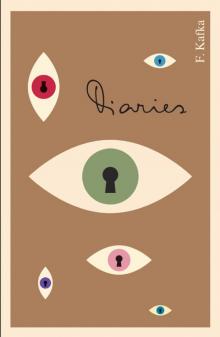 Diaries of Franz Kafka
Diaries of Franz Kafka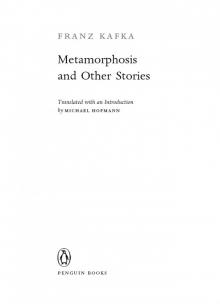 Metamorphosis and Other Stories
Metamorphosis and Other Stories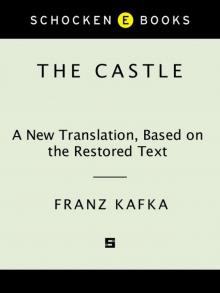 The Castle: A New Translation Based on the Restored Text
The Castle: A New Translation Based on the Restored Text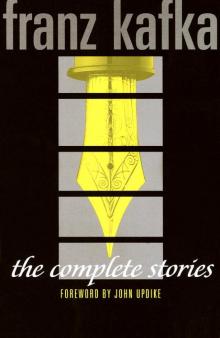 The Complete Stories
The Complete Stories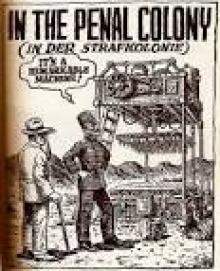 In the Penal Colony
In the Penal Colony The Trial
The Trial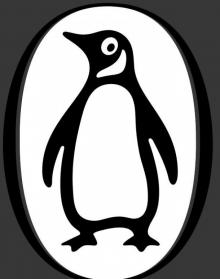 Amerika
Amerika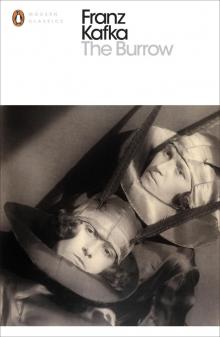 The Burrow: Posthumously Published Short Fiction
The Burrow: Posthumously Published Short Fiction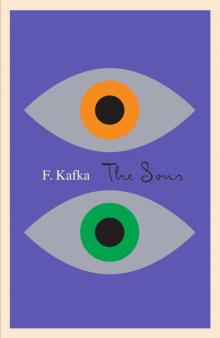 Sons
Sons Letters to Milena
Letters to Milena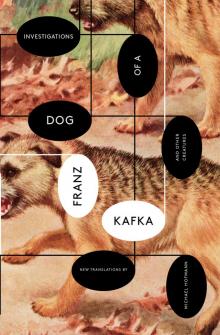 Investigations of a Dog: And Other Creatures
Investigations of a Dog: And Other Creatures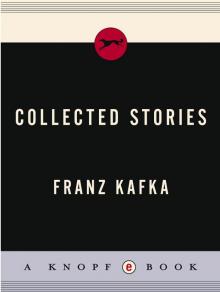 Collected Stories
Collected Stories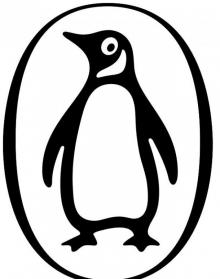 The Great Wall of China
The Great Wall of China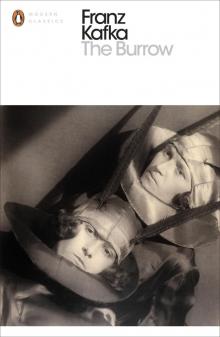 The Burrow
The Burrow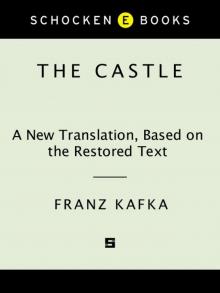 The Castle
The Castle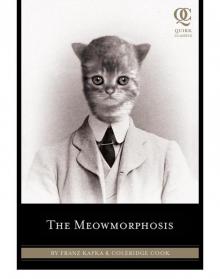 The Meowmorphosis
The Meowmorphosis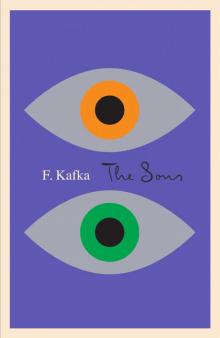 The Sons
The Sons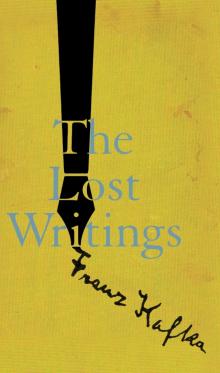 The Lost Writings
The Lost Writings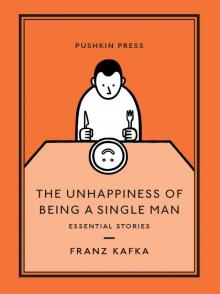 The Unhappiness of Being a Single Man
The Unhappiness of Being a Single Man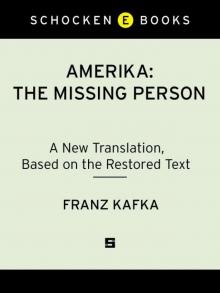 Amerika: The Missing Person: A New Translation, Based on the Restored Text
Amerika: The Missing Person: A New Translation, Based on the Restored Text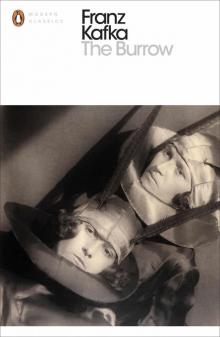 The Burrow: Posthumously Published Short Fiction (Penguin Modern Classics)
The Burrow: Posthumously Published Short Fiction (Penguin Modern Classics)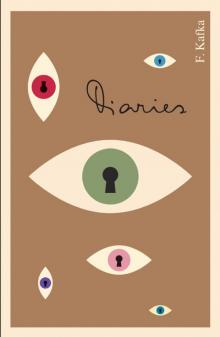 The Diaries of Franz Kafka
The Diaries of Franz Kafka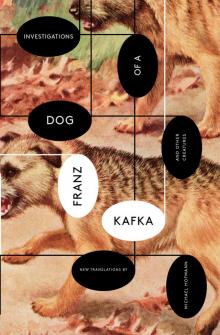 Investigations of a Dog
Investigations of a Dog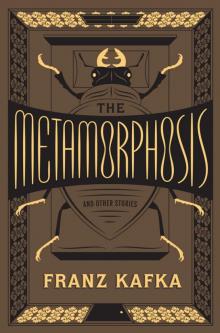 The Metamorphosis and Other Stories
The Metamorphosis and Other Stories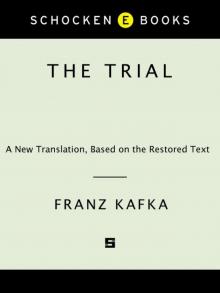 The Trial: A New Translation Based on the Restored Text
The Trial: A New Translation Based on the Restored Text